Station Eleven
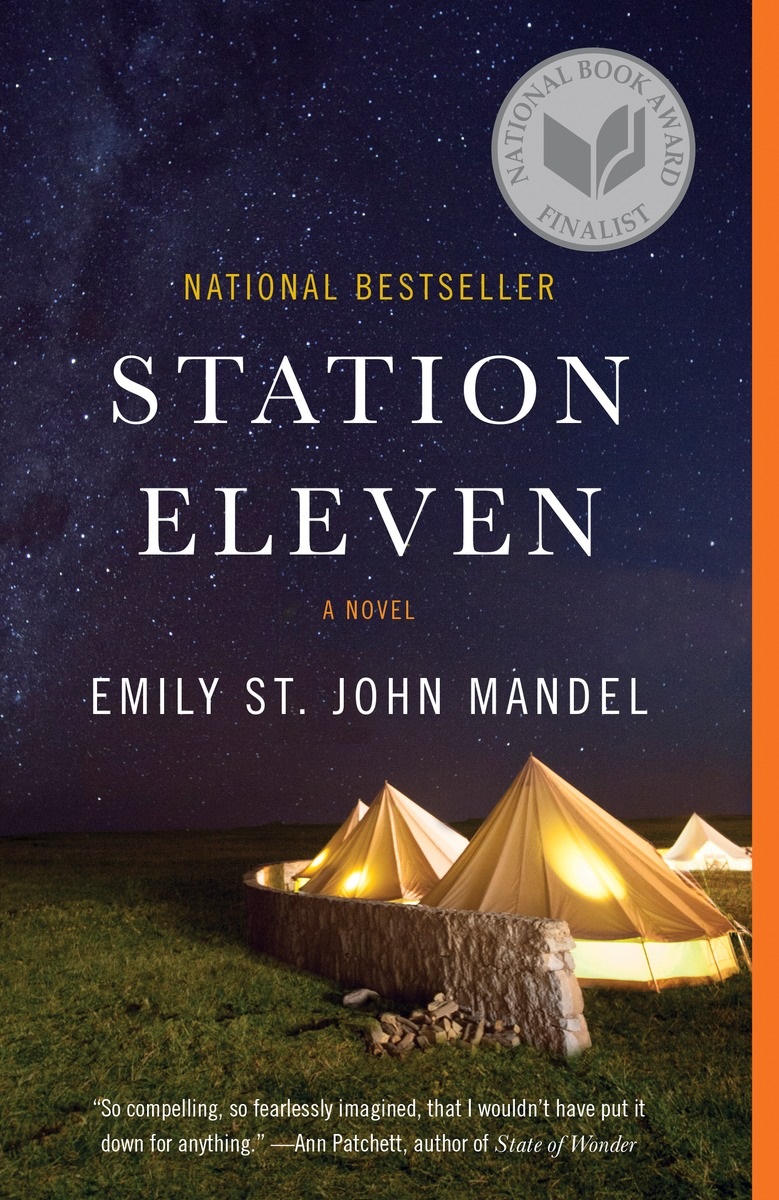
Overview
Station Eleven, Emily St. John Mandel's fourth novel, won the Arthur C. Clarke Award, was a finalist for the National Book Award and PEN/Faulkner Award, was an Amazon Best Book of the Month, and was named one of the best books of the year by more than a dozen publications. It's been translated into 27 languages. "Equal parts page-turner and poem" (Entertainment Weekly), the novel is set 20 years after a devastating flu pandemic destroys civilization as we know it. A woman moves between the settlements of the altered world with a small troupe of actors and musicians until they encounter a violent prophet who threatens the tiny band's existence. "Possibly the most captivating and thought-provoking post-apocalyptic novel you will ever read" (The Independent London). "Think of Cormac McCarthy seesawing with Joan Didion ... Magnetic" (Kirkus starred). "It's hard to imagine a novel more perfectly suited, in both form and content, to this literary moment" (The New Yorker). "I kept putting the book down, looking around me, and thinking, 'Everything is a miracle'" (National Public Radio).
"Survival is insufficient." —from Station Eleven
Introduction
"I wanted to write a love letter to the world we find ourselves in." — Emily St. John Mandel in an interview with Bustle
The post-apocalyptic novel has grown popular enough to warrant its own genre, and one could argue that Station Eleven fits well within that category. Published by Knopf in 2014, it tells the story of a small band of actors and musicians 20 years after a flu pandemic has wiped out 99% of the Earth's population. Like other books in the genre, it highlights the fragility of our existence, our violent nature, and our capacity to survive despite the inevitable hardships of starvation, loneliness, and chaos. But this is where the similarities taper off, for the story Emily St. John Mandel chooses to tell is not one of horror and mayhem that even she admits would befall the survivors in the immediate aftermath of a complete societal collapse. Station Eleven describes a world of hope, of people coping with nostalgia and loss, both in the present and the future, of the power of art and relationships to fulfill us, sustain us, and nurture us back to our best selves.
The novel begins on a snowy night in Toronto during a theater production of Shakespeare's King Lear, where eight-year-old actress Kirsten Raymonde sees the famous Hollywood actor Arthur Leander suddenly struck by a fatal heart attack. This is the same night a super-flu starts to explode like a neutron bomb around the globe, overcrowding hospitals, grounding flights, clogging highways, rendering phone and internet connections useless. Soon there is no electricity, no running water. Within the week, civilization as we know it is wiped out.
From here, the narrative jumps 20 years into the future to a region around the Great Lakes when the worst is over and hints of culture and society are beginning to reemerge amidst a scattering of small settlements of survivors. There are no countries and no borders, and "ferals" still leap out from behind bushes, but there are pockets of tranquility and order. Kirsten is now an adult and part of a nomadic group of classical musicians and actors called the Travelling Symphony that roams the settlements in horse-drawn wagons performing Shakespeare plays, dedicated to keeping art and humanity alive. At each stop, Kirsten scavenges abandoned homes looking through old magazines for mention of Arthur, who—unlike almost everyone and everything else about the old world—is still vivid in her memory. She carries with her a set of graphic novels called Station Eleven that Arthur gave her just before he died.
"I've long been interested in memory as a topic," writes Mandel. "I'm interested in its unreliability ... and in the possibility of memory becoming a burden ... that in a post-apocalyptic scenario, the more you remember, the more you've lost" (Tethered by Letters). To help remind us of the world they lost, the narrative offers flashbacks to the interconnected lives of Arthur and his three wives (Miranda, Elizabeth, and Lydia); Arthur's friend, Clark; Elizabeth and Arthur's son, Tyler; and Jeevan, the paparazzo turned entertainment journalist who gets the exclusive that Arthur is leaving his second wife and son to be with his soon-to-be third wife. Jeevan was also in the audience of the play in which Arthur died, the first night of the pandemic. Mandel had to make a map of the book in Excel to keep track of the multiple storylines, both past and present. "I was constantly reordering the book and moving chapters around" (BookPage).
When the Travelling Symphony returns to a settlement to reunite with a couple and their baby who were once part of the troupe, their lives are threatened by a dangerous prophet and head of a doomsday cult. As the novel moves towards its final climactic scenes, the artists attempt to escape to a settlement in a former major airport, rumored to be a functioning community of 300 people and home to the Museum of Civilization, a collection of old-world artifacts—credit cards, car engines, red stiletto heeled shoes—that survivors had found and preserved.
Station Eleven is ultimately and intentionally a hopeful book, says Mandel. And it's a reminder that art—a play, a comic book, a musical interlude, a museum display, even an apocalyptic novel—can be the best means towards cultivating a civilization and preserving our humanity.
- The novel opens with a passage by Czeslaw Milosz. What does it mean? Why did Mandel choose it to introduce Station Eleven?
- Does the novel have a main character? Who would you consider it to be?
- How do Shakespearean motifs coincide with those of Station Eleven, both the novel and the comic?
- Arthur's death happens to coincide with the arrival of the Georgia Flu. If Jeevan had been able to save him, it wouldn't have prevented the apocalypse. But how might the trajectory of the novel been different?
- What is the metaphor of the Station Eleven comic books? How does the Undersea connect to the events of the novel?
- “Survival is insufficient,” a line from Star Trek: Voyager, is the Traveling Symphony's motto. What does it mean to them? Does it hold true for you? What role does art play in society?
- The prophet discusses death: “I'm not speaking of the tedious variations on physical death. There's the death of the body, and there's the death of the soul. I saw my mother die twice.” Knowing who his mother was, what do you think he meant by that?
- Certain items turn up again and again, for instance the comic books and the paperweight—things Arthur gave away before he died, because he didn't want any more possessions. And Clark's Museum of Civilization turns what we think of as mundane belongings into totems worthy of study. What point is Mandel making? What items do you think you’d strive to preserve?
- On a related note, some characters—like Clark—believe in preserving and teaching about the time before the flu. But in Kirsten's interview with François Diallo, we learn that there are entire towns that prefer not to: “We went to a place once where the children didn't know the world had ever been different . . . ” What are the benefits of remembering, and of not remembering?
- What do you think happened during the year Kirsten can't remember?
- In a letter to his childhood friend, Arthur writes that he's been thinking about a quote from Yeats, “Love is like the lion's tooth.” What does this mean, and why is he thinking about it? How does the impending publication of those letters affect Arthur?
- Arthur remembers Miranda saying “I regret nothing,” and uses that to deepen his understanding of Lear, “a man who regrets everything,” as well as his own life. How do his regrets fit into the larger scope of the novel? Other than Miranda, are there other characters who refuse to regret?
- Throughout the novel, those who were alive during the time before the flu remember specific things about those days: the ease of electricity, the taste of an orange. In their place, what do you think you'd remember most?
- What do you imagine the Traveling Symphony will find when they reach the brightly lit town to the south?
- The novel ends with Clark, remembering the dinner party and imagining that somewhere in the world, ships are sailing. Why did Mandel choose to end the novel with him?
Discussion Questions for Station Eleven by Emily St. John Mandel provided courtesy of Vintage Books.
Station Eleven Hits Home Amidst Wildfire in Santa Barbara, CA
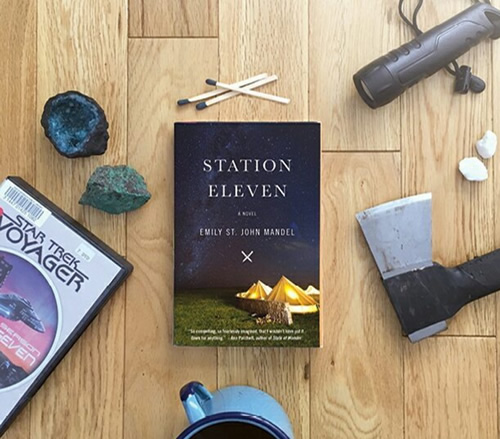
|
The Santa Barbara Public Library held its final NEA Big Read event with an appearance from Emily St. John Mandel just one day after the Thomas Fire ignited Ventura and Santa Barbara Counties, becoming the largest wildfire in modern California history. The month leading up to its final event was jam-packed with book discussions, a Spanish language disaster preparedness workshop, an original theater performance, a costume contest, the creation of a “Museum of Civilization,” a “Surviving the Quiz Pandemic” trivia night at a local pub, and preschool story times featuring John Rocco’s Blackout, providing a platform for parents of young children to discuss what happens when the power goes out. Here is an excerpt from the library’s interview with Arts Midwest describing inventive programming and the immediacy of its impact on the community.
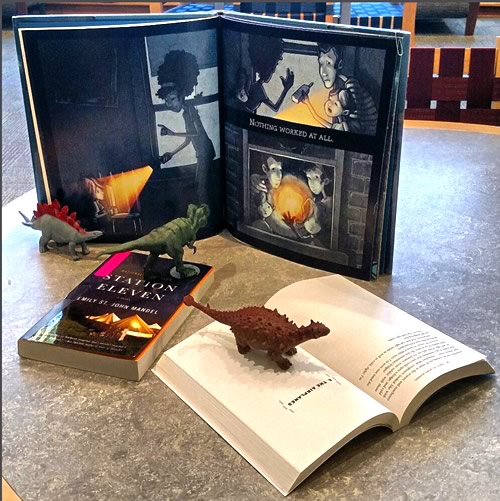
|
“November 1st was an exciting night as we came together as a community and kicked off our NEA Big Read for Station Eleven. The theme for the evening was a celebration of the lyrical and post-apocalyptic qualities and Sci-Fi references within the story and we oriented activities around Shakespeare and Star Wars. As people picked up copies of Station Eleven, they were also invited to participate in a live reading of Verily, a New Hope and in a… cosplay costume contest. This included the categories of ‘Best Shakespeare Cosplay’, ‘Best Star Wars Cosplay’ and ‘Best Mash-up of Shakespeare and Star Wars.’”
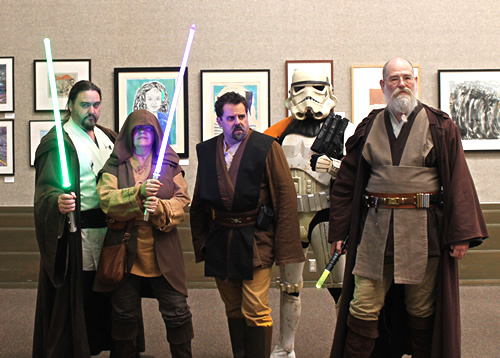
|
“Another event that was outside-the-box was our partnership with Old Kings Road, a local pub in Santa Barbara, and a local pub quiz master. We “took over” a regular pub quiz night with Station Eleven themed trivia. Surviving the Quiz Pandemic was a night of trivia related to pandemics, Shakespeare, and graphic novels. The pub quiz master enjoyed partnering with the library, as well as having a theme to inspire trivia questions. He promoted the library throughout the night and library staff were on-site to answers questions about the book and give copies of the book away. Our most participatory activity was one of the more simple implementations of the month. Boards with the questions “What is your post-apocalyptic skill?” and “What would you miss?” were placed inside the entrance to the Central Library. The question boards sparked community conversations and interactions throughout the month. Answers ranged from the poignant to the amusing, but all were meaningful and had our patrons thinking about how Station Eleven relates to their own lives.”
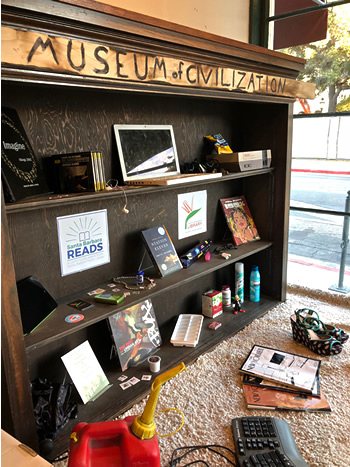
|
“Unfortunately, being able to intimately relate to the themes of the story went into almost immediate effect with our community as the Thomas Fire, the largest in modern California history, sparked the day before our final event with Station Eleven author, Emily St. John Mandel. In fact, the night of our author talk, the lights were flickering on and off until right before we began. Thus, shortly after our NEA Big Read concluded our communities were immediately faced with considering the questions of emergency preparedness, disaster response, and community recovery. There was something truly eerie and prescient about the outbreak of the Thomas Fire during Mandel’s visit — a natural disaster, the scope of which we couldn’t yet begin to guess, just beginning to loom as we discussed a fictional apocalypse with its creator. In a strange way, her visit and our NEA Big Read marked the end of our before: before the fire, before the flood. However, it also set the tone for our after — a community drawn together in shared experience.”
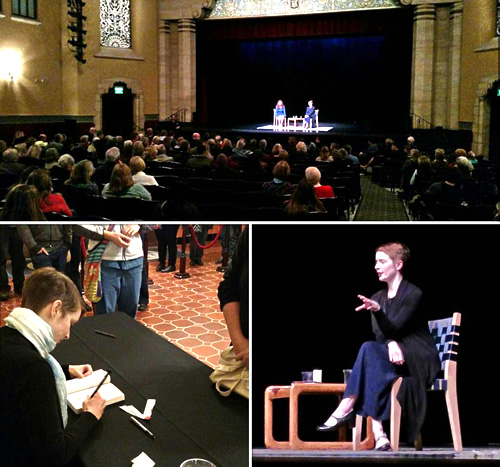
|
Read the full interview from Arts Midwest.
With Station Eleven, Public Libraries Strengthen Partnerships in Juneau, Alaska
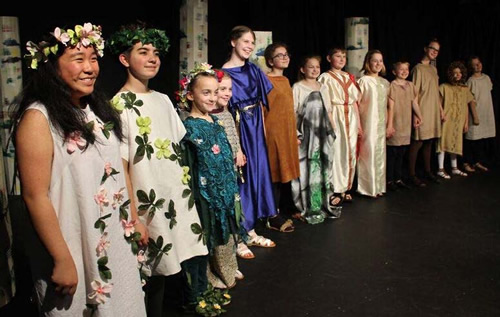
|
“The on-going partnership between the major library entities in our community was certainly enhanced and strengthened during the Big Read. Presenting the Big Read was truly a collaborative effort that allowed us to work together and promote reading, literacy, and libraries in a unified way. Overall, this partnership operated very synergistically and no one library could have done such a thorough job of presenting and promoting the Big Read without all the others.
“We also developed new partnerships with Bartlett Regional Hospital, the Public Health Center, the Juneau Local Emergency Planning Committee (LEPC) and the Juneau Symphony. The partnership with the hospital was particularly successful in that they provided great media support for the Big Read in their quarterly magazine, House Calls, that goes to every mailbox in Southeast Alaska (around 25,500). Many people reported they saw the information on where to get a free book in House Calls. Also, given the success of some of our programs and hosting Bartlett’s Infection Preventionist Nurse at our book discussions, the hospital is now pursuing putting together a preventative health care speaker series that they would like to hold at the library.”
– from a final report by the Juneau Public Library, an NEA Big Read grant recipient in FY 2016-17.


